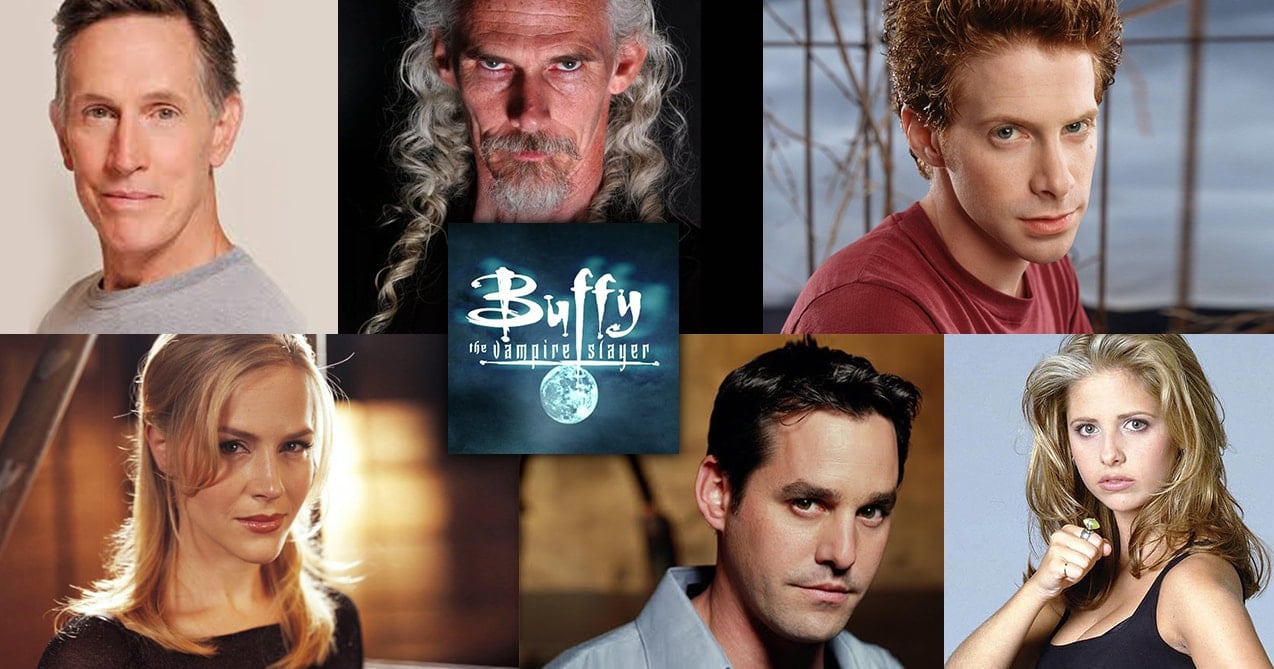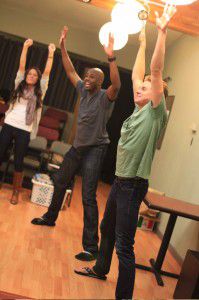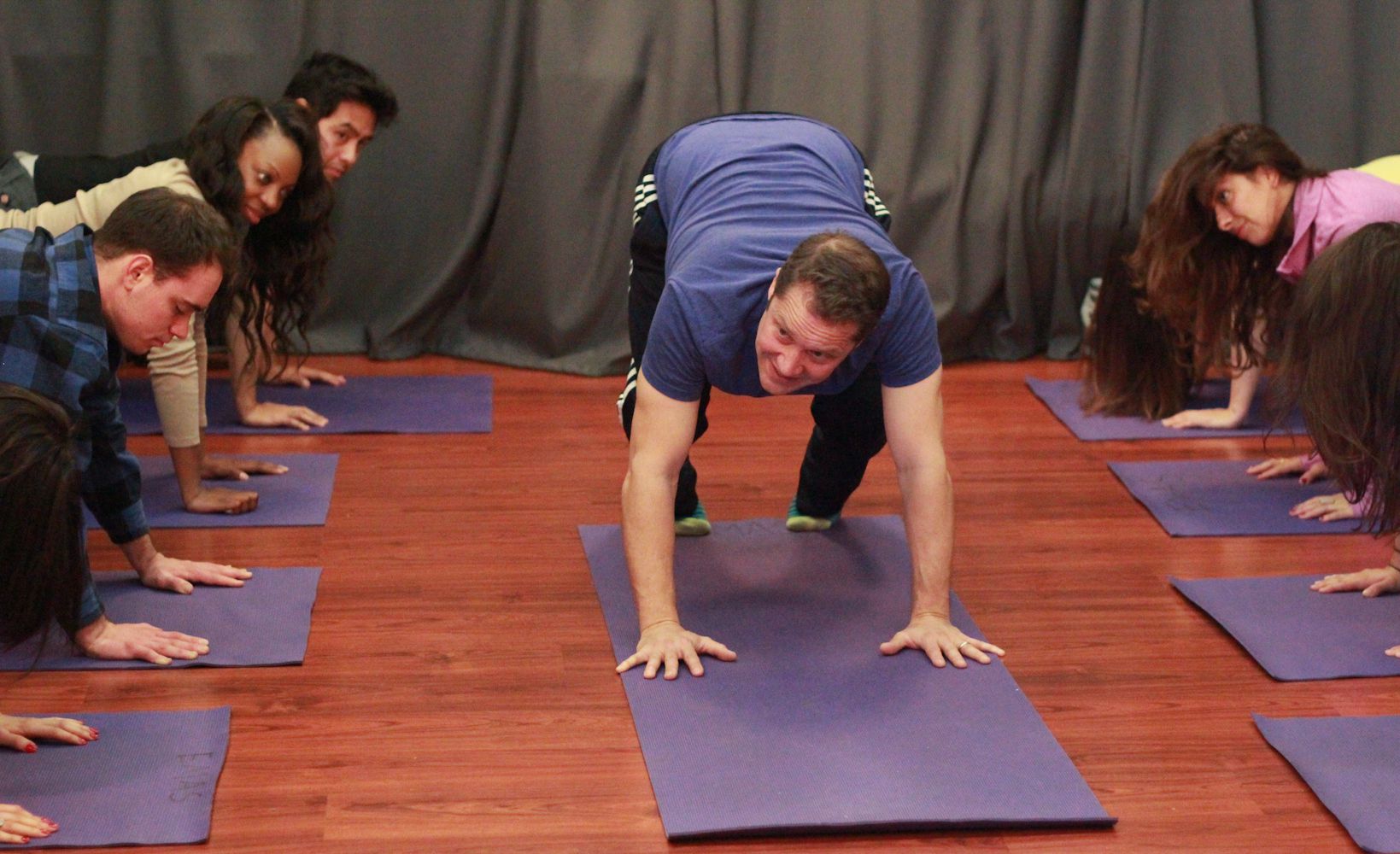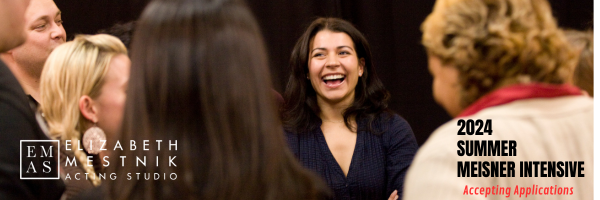6 Netflix Shows An Aspiring Actor Should Study

Most people don’t think of “Netflix and chill” as a way to do their homework. However, most people aren’t actors who are devoted to their craft. You can binge-watch hundreds of series on Netflix. Some of the highlights are the original Netflix series, many of which feature actors showing off their chops in a unique way. Here’s what (and who) to watch if you’re an aspiring actor.
GLOW
As Ruth Wilder, Alison Brie goes beyond her usual girl-next-door role in this campy comedy-drama. Although she does play a naïve, doe-eyed actress, she delivers moments of darkness, loneliness and desperation. Brie really shines during a fantasy scene in which she is all-out fighting with her arch-nemesis Debbie, who is played by Betty Gilpin. The tiny actress becomes larger-than life in the wrestling ring.
In GLOW, Brie also shatters the image of the polished, uptight women that she typically portrays. In GLOW, Brie allows her rough edges to seep through her perfect smile. Her performance is so authentic that you can glimpse her inner fearlessness.
Gypsy
In this psychosexual drama, Naomi Watts plays Jean Holloway, a therapist who develops her own fascinations with the objects of her patients’ obsessions. A Meisner-trained actress, Watts authentically draws viewers into every moment on screen.
The camera often focuses on close-ups of Watts’ face, which reveals the expressions of a suburban housewife as easily as those of a fanatical lover and skillful liar. She seamlessly contrasts the brightest and darkest sides of her character in much the same way as she did in her breakout film, Mulholland Drive.
Orange Is The New Black
We couldn’t write an article about Netflix shows to study without mentioning OITNB. Like GLOW, the show’s characters are well-defined and rife with unexpected as well as predictable qualities. Playing these types of characters requires an ability to tap into a well of emotions.
The character who is confident on the outside often reveals her most vulnerable insecurities at the most inopportune moments. The strangest characters have the most relatable backstories. The most conventional characters have surprisingly eccentric qualities.
It takes skilled actors to effectively portray these personas. Their motivations must come off as realistic for the audience to bond with them. No matter how outlandish the storylines are, they resonate with the viewers because the actors access genuine emotions to express them.
The Office
Although Michael Scott, played by Steve Carell, is an extraordinary lead for this mockumentary-style comedy, the other actors support the comedy in genius fashion. Watch this series for a look into how to create a solid character.
This television show is about more than great writing. Each actor has developed specific mannerisms and quirks that represent his or her identity. While some of these traits are over the top, others are starkly subdued. Observe the way each actor develops his or her character alone, in contrast to and in conjunction with the other characters.
Stranger Things
If you want to be amazed by the proficiency of an ensemble of child actors, watch Stranger Things. Although the Netflix-original series deals with the more bizarre side of the supernatural, the superb acting makes the oddities seem relevant.
Even if Winona Ryder has irritated you in the past with her exaggerated portrayal of drama and despair, you’ll buy her interpretation of a worried mother agonizing over the disappearance of her son. Her agitation contrasts well with the more even-keeled nature of the children.
It’s interesting to watch these young actors portray children who are passionate about finding their friend but don’t let the mystery derail their motivations. Their performances are entrancing.
Bloodline
Is good acting enough to keep a show going? That’s the question posed by many Bloodline reviewers. The Netflix-original series features an ensemble of actors who brought depth to roles that might otherwise have been shallow.
Kyle Chandler is perhaps most well-known for playing the role of Coach in Friday Night Lights. He had to work hard to disassociate himself with that character to play the role of the “good” brother with a villainous undertone in Bloodline. He performs his role fluidly, as do his costars.
Sam Shepard plays the patriarch of the family. Shepard studied under Wynn Handman, a protégé of Sanford Meisner. Ben Mendelsohn’s performance also stands out. He has been nominated for several awards for his portrayal of Danny, and in 2016 he won the Primetime Emmy for Outstanding Supporting Actor in a Drama Series.
Sometimes, an actor’s performance can go above and beyond the writing, storyline or plot of a television show. These series, which are available to stream on Netflix, are ideal examples of this. When you watch them, you’ll get pulled into the emotion, drama, comedy and action because of the actors’ brilliant execution of the script.
Guest Post: What I have learned from Buffy The Vampire Slayer
Guest Post by Laura Blackburn

People sometimes laugh at me when I tell them that I have learned more about acting from a cult television show than an Academy Award winning motion picture. However, I have found that studying the techniques of actors who must convey a sense of realism in spite of fantastic subject matter has made me a better actor in every sense. This is why I use the television series “Buffy the Vampire Slayer” as my inspiration when taking on a new role.
Anyone who has watched or even heard of “Buffy the Vampire Slayer” knows that the meat of the series is the writing and directing from Joss Whedon and his team. Likewise, any screenwriter knows that excellent acting is required from all involved to make a script come alive. A good actor can make a superbly written script enjoyable. A great actor can create a series that continues to awe and inspire decades after its inception.
Supporting Actors
Supporting characters are often mean to give the lead a sense of purpose. They also often offer a chance for exposition, serving as the audience’s stand-in. These characters ask the important questions, helping to further the plot of a story. Excellent actors take these roles and turn them into something more than a plot device. This was the case for much of the supporting cast on “Buffy.”
One of the most difficult supporting roles on the series was that of Xander Harris, portrayed by the underrated Nicholas Brendon. In a series that was filled with witches, werewolves, demons and, of course, vampires, Brendon was the everyman who had to hold his own in an other-worldly atmosphere. The actor was given lines that were largely meant to serve as comic relief. However, his ability to add depth and meaning to simple one-liners made his character an integral part of the show. Watching Brendon, I have learned not to take any lines for granted.
Some actors were so adept at their roles on “Buffy” that their bit parts were expanded into multiple episodes, some even becoming mainstays on the series. Seth Green, who portrayed the werewolf Oz, was meant to depart in the same season that he appeared. Treating his character with unexpected sensitivity, he made the viewing audience fall in love with both the man and the monster. As an actor, Green could convey more in an eyebrow raise than some other, lesser actors might be able to do with an entire page of dialog. Green has taught me to try new angles with my characters; to explore the unknown.
Julie Benz’s character, Darla, was originally meant to be killed during the second the episode in the series. Instead, her presence was thought to add a needed layer to the romance between Buffy and her vampire boyfriend, Angel. Benz’s approach to her portrayal as a vampire was a combination of old-school horror and girl next door. She was at times soft spoken and sensual, and at other times terrifying. Benz would go on to appear in many more episodes of “Buffy” while also playing a crucial role in the spin-off series “Angel.” What she has taught me is to remember that every role can and should be multidimensional.
Big Bads
For the uninitiated, “Buffy” ran for seven seasons. Each season had an over-arching story that appeared throughout the series, culminating with an ultimate face-off with the Big Bad. Buffy and her gang fought many other monsters along the way. Some of the most memorable of these lesser monsters include The Gentleman, a gang of mute, heart-stealing demons who communicated through gestures rather than language; Gnarl, a parasitic flesh-eater with a sing-songy style of speech; and the Turok-Han, the ultimate vampire. Interestingly, all of these monsters were played by the same actor: Camden Toy.
Toy’s movements can be considered their own form of art. He is able to convey any type of emotion he wishes with or without a script. His episodes can be studied by anyone who wishes to be more physical with a performance. Acting is much more than the spoken word. Toy encompasses this in each of his roles.
It can be extremely difficult to visibly portray emotion when covered in prosthetics, which are required for many of the monsters on the show. The Master, played by Mark Metcalf, was a creepy vampire who was adored and feared by other under worldly creatures. With a face completely disguised throughout his run on “Buffy,” Metcalf used his gestures and voice alone to give viewers an almost sensual fright. Considering the versatility needed for these roles, the Big Bads of “Buffy” have taught me to never rely on one facet of my craft. Rather, I should hone all aspects of my acting ability to create a truly meaningful character.
Buffy the Vampire Slayer
Playing a superhero is never a simple task, but it was one that was made for Sarah Michelle Gellar. She chose to play Buffy Summers as a typical girl who just happened to also have super powers. Anyone could relate to Buffy’s daily struggles. She had boy problems. She worried about her hair and clothes. She had difficulty relating to her mother and studying for her SATs. Because Gellar was so able to encompass these everyday traits of her character, she was able to show the viewer a superhero that could almost be real. She was as adept at displaying physical power when fighting a monster twice her size as she was at showing extreme grief when handling the death of her mother. Gellar could play funny, frightened, determined and even bored, all in the same scene. She has taught me to never give up.
3 minute Meisner Mondays: Part IX of The Repetition Exercise
The ninth video in the series. How an actor should prepare for his/her role? Elizabeth encourages students to explore their personal fantasy lives. Some people act from a point of power, some out of joy or sexual desire – it’s all about your personal fantasy life.
3 minute Meisner Mondays: Part VIII of The Repetition Exercise
The eighth video in the series. Repetition is changed by improvisation on the text. We continue into the second trial.
Now Enrolling: Summer Actor’s Voicework Program
Our Fitmaurice Voicework Summer Session is now enrolling!
- June 22nd – July 18th
- Tuesdays and Thursdays from 7PM to 10PM
Held twice weekly, our Fitzmaurice Voice Class taught by Michael Yurchak has been a favorite among our LA acting students for years.
 This workshop will introduce students to the fundamental elements of Fitzmaurice Voicework® that explores the dynamics between the body, breath, voice, the imagination, language and presence.
This workshop will introduce students to the fundamental elements of Fitzmaurice Voicework® that explores the dynamics between the body, breath, voice, the imagination, language and presence.It is a physical process that is designed to promote an awareness of the body, spontaneous and free breathing, and healthy vocal expression. It is a helpful tool for actors to find their impulses and to expand their imaginative potential.
The workshop will use text to learn how structure can enhance the vocal freedom and provide clarity and connection to text. All students will be required to bring in 16-20 lines of memorized Shakespeare.
To Read More about the class Click Here!
About Michael Yurchak:
 Michael Yurchak is an award winning actor, voice over artist and educator. He has taught voice over and acting workshops around the country to all levels of students. In addition to his work with EMAS, Michael serves as a Lead Teaching Artist and Project Faculty Member for The Center Theater Group and Will Geer’s Theatricum Botanicum in LA. He has also worked with the Roundabout Theater Company and The New Victory Theater in New York. He holds a BA from Colgate University and an MA from NYU and is a certified Fitzmaurice Voicework Technique Instructor
Michael Yurchak is an award winning actor, voice over artist and educator. He has taught voice over and acting workshops around the country to all levels of students. In addition to his work with EMAS, Michael serves as a Lead Teaching Artist and Project Faculty Member for The Center Theater Group and Will Geer’s Theatricum Botanicum in LA. He has also worked with the Roundabout Theater Company and The New Victory Theater in New York. He holds a BA from Colgate University and an MA from NYU and is a certified Fitzmaurice Voicework Technique Instructor
3 minute Meisner Mondays: Part VII of The Repetition Exercise
The seventh video in our ongoing series. Repetition is substituted by improvising on text. When students get to absorbed in thinking, Elizabeth points out that impulse should come first.
Now Enrolling for Intensive Summer Meisner Technique Classes
3 minute Meisner Mondays: Part VI of The Repetition Exercise
The sixth video in a series of 3 minute segments of a Meisner class filmed for the LA Times. Elizabeth encourages students to act from their instincts. Activities get more and more challenging.
Register for our Intensive Summer Meisner Technique Classes because overthinking is not the Meisner way.
3 minute Meisner Mondays: Part V of The Repetition Exercise
The fifth video in a series of 3 minute segments of a Meisner class filmed for the LA Times. Students continue with more challenging tasks while still doing the Repetition Exercise.
Interested? Register for our Intensive Summer Meisner Technique Classes
An Alternative to Fight or Flight: Allowing the Human Impulse through Meisner Technique and Fitzmaurice Voicework

The body doesn’t know the difference between real life and a fully lived fantasy – Elizabeth Mestnik
Meisner is all about honoring your impulse and being true to your own point of view while tending to the business at hand, including taking in your partner, fighting for what you need, and understanding your circumstances given the the text. Fitzmaurice Voicework aims to release tension and loosen the protective elements we put into place to stop ourselves from feeling or expressing too deeply. The tricky part in both cases is that we, as humans, have learned to protect ourselves from being hurt (physically and emotionally) by modifying or even stifling our impulses, because they would not be appropriate in pedestrian society (what if you burst into tears over a faulty drink order or told your boss what you really think of them?). The point is, we develop an understanding of what works best for us to live our lives as static-free as possible over a lifetime of information gained from our external pedestrian environment. And, it has worked well enough that we’re all still here! So when we, as actors, try to re-train our own bodies and emotional lives to let go of all that and be willing to be vulnerable and fully expressive, it’s no surprise that there is often some internal push-back.
Fitzmaurice Voicework allows an actor to let go of some of the tension, known as emotional armor, through a series of modified yoga poses and other breath and body work. We, as people, have learned to use emotional armor to stop ourselves from feeling the things that might hurt us, or fully expressing the things that might hurt other people. The amygdala is a small organ inside the brain that controls what is sometimes referred to as the “fight or flight response.” Fight or flight is what mammals use to save their lives in the face of danger, whether it be perceived or actual. When pre-historic man (or woman) was faced with a dangerous situation, he or she had two choices: to run for his or her life or to fight for his or her life. Placed in this situation, the amygdala fires and makes the decision for us in a split-second based on the information available. That system for survival has proven effective (again, we’re all here, aren’t we?). Unfortunately it is an antiquated system and is not always suited to today’s human world.
For example, the fear or discomfort one experiences when facing an audience on opening night may fill an actor with anxiety and discomfort. However, the level of danger one is actually in pales in comparison to what cave men faced when a saber tooth tiger was out looking for its supper! Still, in some ways the body doesn’t know the difference, and the feeling of fear and panic one gets can become overblown and shut down one’s ability to make complex choices of expression. That is an uncomfortable place to be. Over time, people build up a defense against such awkwardness: either avoid situations where that feeling of panic might come up at all, or shut down any real emotional availability before the feelings ever happen. This decision to pro-actively suspend the possibility of risk is often taken care of for us by our internal sense of survival (the subconscious mind). What’s more, once the decision is made, it can be quite challenging to reverse it.
So, there is a lot going on in a normal human’s internal make up that would prefer to stop impulses and emotional expression. Then that same human decides to be an actor and is suddenly asked to forget all that. Tough stuff! The good news is that both Meisner and Fitzmaurice are interested in freeing the impulse and allowing true feelings to be shown and expressed through behavior and words. Both techniques do so through carefully constructed exercises taught by instructors with years of experience. Both seek to provide opportunity for the actor to explore honest expression in a safe environment and regain control of what it means to allow such vulnerability.
Full, supported breathing is one way to start the process of allowance. We literally take in information from the environment and people around us. That information travels through the body, passing a series of “thought centers” (aligned with the Chakras), and picking up information along the way. The journey of the breath then reverses, and an honest response is returned to the environment through verbal or behavioral expression. This whole journey takes only a split second (about the same amount of time the amygdala needs to fire the fight or flight response). By becoming familiar with the possibility of allowing true impulse and expression to exist within us, Meisner and Fitzmaurice enhance our comfort and fluidity of function within this space.
A guiding principle of both Meisner and Fitzmaurice is to help actors allow for the vulnerable process of searching the soul and the self for honest feelings and then granting themselves permission to express those feelings with conviction and authenticity. It is an alternative to the fight or flight response, and it is available to anyone brave enough to seek it out. If this sounds interesting to you, come join us in our Meisner and Fitzmaurice classes.
Have any thoughts? Leave a comment !
 Michael Yurchak is a doctoral candidate at NYU, a certified teacher of Fitzmaurice Voicework, and a Meisner and technique teacher at EMAS.
Michael Yurchak is a doctoral candidate at NYU, a certified teacher of Fitzmaurice Voicework, and a Meisner and technique teacher at EMAS.
To read more about Michael click here, or check out his IMDB page.
3 minute Meisner Mondays: Part IV of The Repetition Exercise
The fourth video in a series of 3 minute segments of a Meisner class filmed for the LA Times. Students start doing different tasks while continuing The Repetition Exercise.
If you love doing different tasks at the same time, then our Meisner Summer Intensive Course might be what you are looking for.









